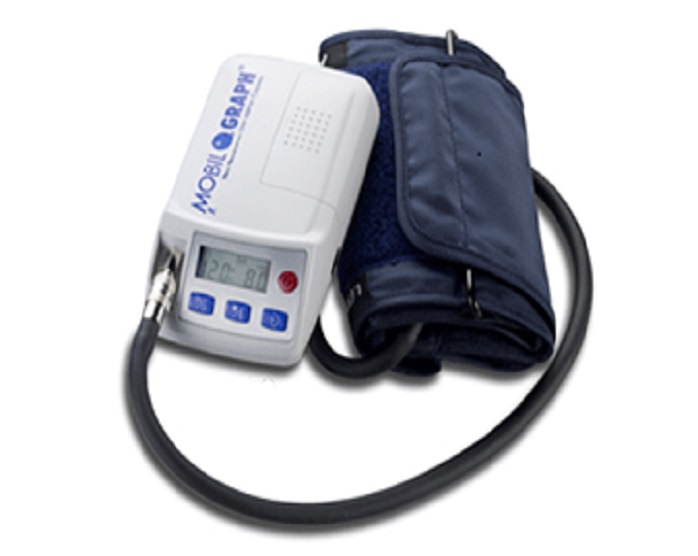The Benefits of the ABPM Examination for Accurate Blood Pressure Analysis
Ambulatory Blood Pressure Monitoring (ABPM) provides an innovative method to evaluating high blood pressure. This method supplies constant, 24-hour information, catching changes that happen throughout day-to-day activities and sleep. Such thorough monitoring not only enhances precision yet also reveals essential patterns, helping to compare real high blood pressure and conditions like white-coat disorder. Understanding these nuances could cause a lot more effective treatment approaches. What implications might this have for patient care and management?
What Is Ambulatory Blood Pressure Monitoring (ABPM)?
Ambulatory Blood Pressure Monitoring (ABPM) is an approach that permits continual blood stress assessment over a 24-hour period, providing a comprehensive photo of an individual's high blood pressure fluctuations. ABPM test in Bangalore. This strategy utilizes a mobile device that immediately gauges blood pressure at regular periods throughout the day and evening. As people deal with their everyday tasks, the gadget records data mirroring their high blood pressure variations throughout various times and conditions, consisting of rest and physical exertion.ABPM is specifically beneficial for diagnosing conditions such as hypertension, as it can identify between real hypertension and white-coat syndrome, where individuals show elevated analyses in medical setups however not in their day-to-day lives. By offering an in-depth sight of blood stress changes, ABPM help doctor in making educated choices regarding diagnosis and treatment. It improves the understanding of blood stress patterns, making it possible for tailored monitoring approaches for patients.
Constant Monitoring for Improved Precision
Continual monitoring of high blood pressure through ABPM greatly boosts the precision of readings compared to typical methods. This strategy enables high blood pressure dimensions at normal periods throughout the night and day, catching fluctuations that may happen because of everyday activities, stress, or various other factors. Unlike solitary readings taken during a center go to, ABPM supplies an extensive profile of a person's blood pressure over a 24-hour period.This continuous assessment brings about extra trusted data, making it possible for doctor to recognize patterns and potential problems that might go undetected with erratic dimensions. It additionally assists compare real hypertension and white-coat syndrome, where individuals exhibit raised readings as a result of stress and anxiety in a clinical setup. By leveraging the benefits of continual monitoring, ABPM considerably enhances diagnosis and therapy strategies, ultimately contributing to much better patient outcomes and even more customized health care methods.
Recognizing Blood Pressure Variability
Blood pressure irregularity describes the variations in blood stress analyses that can occur with time because of different factors, including physical activity, stress and anxiety, and circadian rhythms. This irregularity is substantial as it provides understandings into a person's cardiovascular wellness. ABPM test in Bangalore. As an example, factors such as workout can briefly raise blood stress, while leisure may cause a reduction. In addition, the body's all-natural rhythms can trigger high blood pressure to vary throughout the day, generally being lower in the evening and higher throughout waking hours. High degrees of variability have been related to increased risks of cardio occasions, making it necessary for healthcare specialists to check these changes. Recognizing high blood pressure variability helps in tailoring therapy plans and examining total health. Accurate appraisal with methods like Ambulatory Blood Stress Monitoring (ABPM) can capture these variants, permitting a more comprehensive examination of a patient's high blood pressure account
Identifying White Coat High Blood Pressure
White coat hypertension, often described as white coat syndrome, is characterized by elevated high blood pressure analyses in clinical settings as a result of stress and anxiety or stress and anxiety. Recognizing its signs and signs is crucial for precise diagnosis, as false impression can cause unnecessary treatments. Comprehending this phenomenon is essential for reliable blood stress administration and individual care.
Comprehending White Coat Disorder
Lots of patients show raised blood pressure analyses in scientific settings, this sensation, understood as white coat hypertension, can cover the true state of their cardio wellness. This problem occurs when individuals experience anxiousness or stress and anxiety throughout medical check outs, resulting in momentary spikes in blood stress. Consequently, health care companies might misinterpret these analyses as a measure of hypertension. White layer disorder highlights the significance of accurate high blood pressure evaluation, as relying only on in-office dimensions can result in unnecessary therapies or misconceptions about a client's wellness. Recognizing this disorder is essential for clinicians, as it underscores the need for different monitoring approaches, such as ambulatory high blood pressure monitoring (ABPM), to acquire an extra exact depiction of an individual's blood pressure levels.
Symptoms and Indicators
Many individuals may experience particular signs that recommend the presence of white coat hypertension. These signs can consist of elevated high blood pressure analyses during clinical brows through, accompanied by feelings of stress and anxiety or nervousness in a professional setting. Clients often report a rapid heart beat or sweating when interacting with medical care professionals, which might aggravate their high blood pressure degrees. In addition, some individuals might discover a disparity between their in-office blood stress analyses and those taken in your home, where they really feel more unwinded. Acknowledging these signs is essential, as they can suggest that stress and anxiety or stress and anxiety pertaining to clinical setups is affecting their blood pressure. Recognizing these signs can aid in identifying white coat high blood pressure and identifying the need for additional evaluation.

Importance of Accurate Diagnosis
Precisely detecting white layer high blood pressure is crucial for reliable blood pressure management. This problem takes place when a person exhibits elevated high blood pressure analyses in a clinical setting because of anxiousness or stress, while typical analyses are recorded in a more relaxed environment. Misdiagnosis can lead to unneeded therapy, subjecting clients to prospective drug negative effects with no real health and wellness benefit. Making use of ambulatory blood stress monitoring (ABPM) is vital in identifying true high blood pressure from white layer disorder. ABPM offers continuous blood pressure measurements over 1 day, permitting a complete evaluation that can help medical care companies make notified choices. Eventually, accurate recognition of white layer hypertension warranties individuals get appropriate treatment and prevents the risks of mismanagement.
Examining Nocturnal Blood Pressure Patterns
Assessing nocturnal high blood pressure patterns is crucial for recognizing a person's overall cardiovascular wellness. Nighttime dimensions can disclose substantial changes in blood pressure, which might indicate high blood pressure variability. In addition, these patterns are very closely associated with heart wellness, highlighting the relevance of constant monitoring beyond conventional workplace sees.
Importance of Evening Measurements

Nighttime blood pressure measurements are frequently essential for recognizing an individual's general cardiovascular health and wellness. These analyses offer essential understandings into exactly how blood stress acts during rest, which can vary markedly from daytime degrees. Checking nocturnal high blood pressure enables the identification of irregular patterns, such as non-dipping or reverse-dipping sensations, which might show an increased risk for cardiovascular events. In addition, nighttime analyses can aid assess the performance of antihypertensive therapies, making sure that drugs are appropriately managed. By catching blood pressure adjustments during the evening, healthcare professionals can establish extra personalized This Site therapy strategies, ultimately boosting person end results and minimizing Visit Website the likelihood of long-lasting issues related to high blood pressure. This emphasizes the significance of extensive blood pressure assessment throughout the night and day.
Detecting Hypertension Irregularity
Exactly how can the irregularity of nocturnal high blood pressure patterns educate high blood pressure monitoring? The evaluation of nighttime high blood pressure through the Ambulatory Blood Pressure Monitoring (ABPM) test exposes vital fluctuations that typically go unnoticed in conventional dimensions. These patterns can show the visibility of "non-dipping" high blood pressure, where high blood pressure falls short to drop throughout rest, recommending a raised cardio danger. By determining such irregularity, doctor can tailor interventions better, adjusting therapy plans based on the person's certain nocturnal high blood pressure habits. Understanding these patterns additionally aids in examining the effectiveness of antihypertensive medications, making certain that people attain perfect high blood pressure control throughout the day and evening. Consequently, nighttime analysis comes to be essential in thorough high blood pressure management.
Connection With Heart Health
Comprehending nocturnal visit here blood stress patterns not only aids in high blood pressure monitoring however also has substantial implications for heart wellness. Research study shows that irregular nocturnal blood stress analyses, such as non-dipping or reverse dipping patterns, are related to raised cardiovascular threats. During sleep, high blood pressure generally decreases, a sensation vital for cardiovascular recuperation. When this decrease is missing, it might signal underlying issues such as free dysfunction or boosted arterial rigidity. Additionally, people with raised nighttime blood stress go to a heightened threat for heart attack and stroke. Subsequently, using ambulatory high blood pressure monitoring (ABPM) to examine these nocturnal patterns can give important understandings, allowing for tailored interventions that much better protect heart health and enhance general person outcomes.
Tailoring Treatment Plans Based on Real-Life Information
Tailoring treatment plans based upon real-life information includes leveraging continual high blood pressure checking to produce tailored medical care methods. The Ambulatory Blood Pressure Monitoring (ABPM) test offers a comprehensive profile of an individual's high blood pressure variations throughout daily tasks. This thorough information permits doctor to determine patterns that may be forgotten in typical office visits.By analyzing fluctuations in high blood pressure throughout different times and problems, medical professionals can adjust medicines, dosages, and way of life recommendations to far better suit specific client demands. This individualized strategy not only enhances the efficiency of treatment plans yet likewise decreases the likelihood of adverse reactions to medications.Furthermore, real-life information can disclose prospective triggers for hypertension, resulting in aggressive treatments. In general, tailoring therapy based upon constant monitoring cultivates a much more effective, patient-centered technique to handling hypertension and improving long-lasting health results.
Boosted Individual Compliance and Involvement
While conventional monitoring techniques might restrict person involvement, using Ambulatory Blood Stress Monitoring (ABPM) greatly improves individual conformity and involvement in their own health care. By enabling people to wear a portable tool that records blood stress over 24-hour, ABPM equips people to take an energetic role in their health and wellness management. This continuous monitoring supplies an extra complete sight of blood pressure variations, motivating patients to comprehend their condition better.Moreover, ABPM fosters an environment where clients can review their readings with doctor a lot more meaningfully, bring about informed decision-making. People come to be much more invested in sticking to recommended treatments and lifestyle alterations when they see real-time data showing their health and wellness standing. Consequently, the change from passive participant to active partner not just enhances compliance however likewise improves general health and wellness results, making ABPM a beneficial device in promoting client interaction in high blood pressure monitoring.
Regularly Asked Concerns
The length of time Does an ABPM Examination Usually Last?
The ABPM test typically lasts 24-hour. Throughout this period, it measures high blood pressure at routine intervals, offering a thorough evaluation of a client's blood stress patterns throughout their daily activities and sleep.
Are There Any Threats Linked With ABPM Testing?

Can ABPM Be Used for Youngsters and Teenagers?
ABPM can be utilized for youngsters and teenagers, providing vital understandings into their high blood pressure patterns. Appropriate tools sizing and interpretation by qualified professionals are imperative to ensure exact evaluations and prevent misdiagnosis.
Exactly How Is ABPM Different From Typical Blood Pressure Monitoring?
ABPM varies from typical monitoring by supplying continual blood stress analyses over 24-hour, catching variations throughout everyday activities and rest, whereas traditional approaches typically rely upon solitary dimensions, possibly missing essential variations in blood pressure.
What Should Patients Do Throughout the ABPM Examination?
Throughout the ABPM test, clients must preserve regular tasks while avoiding hefty workout, excessive caffeine, and smoking cigarettes. They should additionally maintain their arm still when the device pumps up, making certain accurate readings throughout the monitoring duration.
Comments on “Sleep, Stress, and the ABPM test in Bangalore: How They Connect”